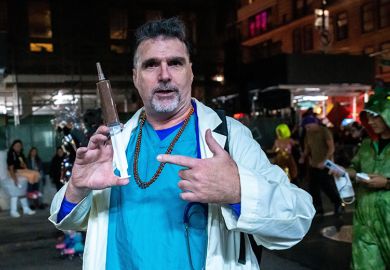My dog shames me by demonstrations of intellectual superiority, especially by feats of memory such as I cannot emulate. He never forgets a face or scent. His ability to remember friends after absences of several years convinces me of the poetic truth of the tale of Odysseus’ homecoming, when the seafarer’s dog, alone of all the household, recognised him. I forget names with embarrassing regularity. I struggle at cocktail parties and conferences, where good manners make impossible demands on my powers of recall. I sometimes forget, albeit momentarily, the names of famous academics when I rattle off reading lists for my students. When I was an undergraduate I had a tutor whose failings in this respect were eccentric. He could rarely remember the title of a book, or the name of its author, although he could always direct me to its exact place on the shelves of the Bodleian.
I console myself with the findings of Daniel Schacter, the Harvard cognitive scientist, who points out that selectively deficient individual memory is an evolved advantage for humans, sparing us from clogging our brains with trivia. The more I forget, the more evolved I can feel. The shortcomings of what most specialists call social memory seem, however, to have no redeeming feature. My students arrive as freshmen in my classroom knowing mainly mythic versions of the past, which most monuments and commemorative events reinforce. The false memories tend to outlast the corrections that academic revisionists offer. In England, the Whig interpretation of history is still blithe and glib, as is, on my present side of the Atlantic, the White Anglo-Saxon Protestant reading of the manifest destiny of the United States. Or our lieux de la mémoire – which include graveyards and memorials of the dead – often have a sepulchral effect, burying the supposedly commemorated in effective oblivion. When my children were little, I made a habit, as we walked around the cities we lived in or visited, of asking if they knew why the streets we frequented bore the names of particular heroes or heroines. At last, when we were strolling along Osler Road in Oxford, my elder boy became exasperated. Sir William was not among his own heroes. “Why do they bother to name streets after people who end up forgotten anyway?” he sagely asked. In parts of Paris, and some other French cities, explanatory inscriptions accompany street signs. But this seems an admission of failure, demonstrating that the commemorative act is insufficient to perpetuate memory. Few read the inscriptions, which become more fodder for oblivion in their turn. I always pause to study Blue Plaques in London, but I do not think I can remember anything about any individual to whose life and achievements they have introduced me.
At some future time, however, to generations of Notre Dame alumni, ‘Jenkins’ will cease to be a person and will be just a well-appointed, neo-Gothic space
In US universities we have a touching faith in naming everything possible – entire institutions, colleges, libraries, residences, departments, rooms, galleries, musical instruments, garden benches, even landings, bits of furniture, bricks and tiles – after benefactors and great servants. Far from perpetuating fame, the practice seems to seal forgetfulness. I suppose most people connected with the University of Notre Dame know that the founder was Father Édouard (or Edward, as he came to be known) Sorin, in spite of the fact that a dining room is named after him. But I know of no student or visitor who has been inspired to enquire into the life of Ignatius Aloysius O’Shaughnessy, one of America’s great philanthropic oil barons of the early 20th century, despite the imposing bulk of the homonymous building outside my study window. Most of the names of the buildings on campus were once those of good and great people, but have become so firmly attached to the structures they designate as to have lost all power of reference to the individuals for whom they were coined. Thanks to the self-effacement of munificent patrons of the university, Father John Jenkins, the president of Notre Dame, is to be the namesake of one of the many new buildings that have turned the edges of the campus, now and for the next few years, into trenches and mudfields where no life or action thrives save those of the cranes, caterpillar-tracks and mechanical diggers. I think Fr John will be long remembered for the seriousness and sensitivity with which he keeps us focused on values – unquantifiable in rankings or assessment exercises – of service to students, the Church and the world. At some future time, however, to generations of Notre Dame alumni, “Jenkins” will cease to be a person and will be just a well-appointed, neo-Gothic space.
There are grand monuments in our cemetery, but in my observation their power of evocation is slight compared with the little, identical crosses that mark the graves of the many priests who have led lives of self-sacrifice in this place, and whose individual identities vanish into the community as their inscriptions fade. Many plaques and reliefs around the campus exalt famous individuals, but few passers-by seem even to notice them, and never react as if stimulated to curiosity, let alone recall. If ever I had enough money to endow a monument, I should dedicate it by name to “Oblivion” or “Ignorance.” That, surely, would grab attention, stimulate investigation and long remain unforgettable.
Register to continue
Why register?
- Registration is free and only takes a moment
- Once registered, you can read 3 articles a month
- Sign up for our newsletter
Subscribe
Or subscribe for unlimited access to:
- Unlimited access to news, views, insights & reviews
- Digital editions
- Digital access to THE’s university and college rankings analysis
Already registered or a current subscriber?





